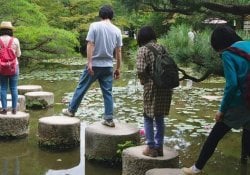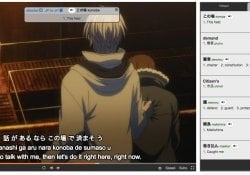Have you ever wondered what is the difference between the expressions Demo [でも] and Kedo [けど]? In this article I will explain the grammatical function of each of them and their main differences in the Japanese language.
The expressions, Demo [でも] and Kedo [けど] are used as a conjunction to say "but" in Japanese. It can also be translated as "no entando" or "although".
We have previously written an article showing how to say “but” in Japanese. In this article you will find some information about these conjunctions, we recommend reading it too.
Before delving deeper, it is important to understand that this “But” used to translate these terms does not always make sense, that is, depending on the situation, context and construction of the sentence, its meaning can change completely.
Read also: How to Say “But” in Japanese – Demo, Kedo or Shikashi?
Kedo - けど
At first let's start by understanding Kedo. As explained earlier, he means: but, although, in spite of, nevertheless. However, not always Kedo will carry this meaning.
How should Kedo be used? Initially it must be used between two different ideas.
Let's see an example: I'm sleepy, but since I have homework to do, I can't sleep.
眠いけど、まだ宿題があるから寝られません。 Nemui kedo, mada shukudai ga aru kara neraremasen.
Note that Kedo arises to make a contrast between the facts, despite this fact, something else occurs.
If you want to be more formal, you can use (Keredomo) けれども, which means the same thing.
There is also the (Dakedo) だけど, which can also be used, but note that: it must be linked to the だ Da/だった Datta/なのだ Nanoda/んだ Nda/, etc.
express openness
Departing a little from this more usual and known sense about Kedo, it is often used at the end of a sentence, but not necessarily meaning "But" as we learned later, in some situations when a Japanese uses Kedo at the end of a sentence. , just wants to leave an opening so you can say something next.
Whether with that, changing the subject, answering something, etc.
express kindness
Also, Kedo can be used at the end of a sentence to express more gentleness in your speech, so it doesn't sound too rude or confrontational.
express uncertainty
It can also be used to show certain uncertainty in your speech, that you are not so sure about what you have just said. For example:
明日だと思うけど… Ashita dato omou kedo
I think it's tomorrow but (not sure)
In addition to these senses, it can also create an opening for someone to explain to you more deeply once you have used Kedo to express certain uncertainty.
We also recommend reading:
- How to express longing in Japanese?
- How a simple sound can express something in Japanese
- How to express "Muito" in Japanese?
![What is the difference between demo and kedo? [でもxけど] Woman wearing face mask at train station](https://skdesu.com/wp-content/uploads/2022/09/japan-mask-train.jpg)
Demo - でも
There are several situations in which the demo has an entirely different meaning than kedo.
To use でも (Demo), it is important to know that it is used to start new sentences or connect two ideas that contradict each other.
To be clearer, let's see in one sentence.
I went to the supermarket. However, I had forgotten my wallet.
スーパーに行きました。でも、財布を忘れました! Suupaa ni ikimashita. demo saifu wo wasuremashita!
Note that unlike Kedo, which remains linked to the previous sentence, the Demo only comes later, after the period in the previous sentence.
Just like Kedo, which has its variations of meanings and meanings, Demo also has its own.
And a very common sense that the Demo has is to separate ideas, which can be translated as: Even if, even if, something like.
Something like
The first sense is: Something like, something like, in this line.
To make it clearer, let's look at an example sentence.
Would you like tea or something?
お茶でも召し上がりませんか? O cha demo meshiagarimasenka ?
Even if
Its second sense is: Even if, even at, even in.
To be clearer, let's look again at another example sentence.
It's okay to say that in Japanese.
Even if you say it in Japanese, it's ok.
日本語でも言っていいよ! Nihongo demo iiteiiyo!
Something like that
Don't even come close, please.
Don't get close or anything like that.
近寄らないでもください。 Chika yoranaidemo kudasai.





